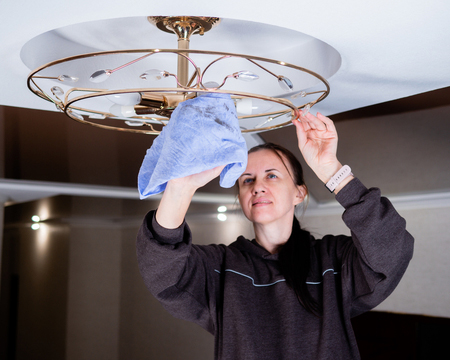Speed Clean A Home
Don't want to spend hours or days spring cleaning your home? Try these steps to quickly and thoroughly clean a home.
10/08/2021
Not everyone has the luxury of time to spend on spring cleaning their home, but it is a task that needs to be done at least once a year, if not more. Even if you have someone that comes in and does your cleaning, there are limits to what they do and what gets missed.
Spring cleaning is an opportunity to clean a home from top to bottom, to get stuck into things that are normally overlooked or not cleaned for long periods of time. But if your time is limited and you prefer to get it over and done with as soon as possible, here are some speed cleaning tips from the experts that will have your home sparkling clean just in time for spring.
1. Start at the top
The best place to start your speed clean is at the top of the room. That way, all the dust ends up on the floor where you want it to be. Have a feather duster and a couple of cloths on hand, one dry, one slightly damped and one damp and with a little Handy Andy on it. If you prefer, you can substitute the Handy Andy with a white spirit vinegar and baking soda paste.
Take everything you need up the ladder to make it easier - You don't want to tire yourself out when you've only just started!
Use a stepladder to be able to reach around the edge of the room to wipe and clean away cobwebs in corners and along cornices or moulding. These areas are never cleaned, and an annual wipe down will do the trick.
Stay up there so that you can remove curtains or drapes from windows. Here's an opportunity to swap these out for lightweight window treatments or have curtains dry cleaned. Cleaning will brighten the colours and refresh the room.
2. Take a couple of steps down
Still using the stepladder for better access, move to curtain rods or rails, window and door frames. You want to wipe down the tops and sides of window and door frames, as well as the tops of doors. Continue to move around the room until everything at that height is cleaned.
3. Light fittings and fixtures next
As you move your way around the room and before getting too low, make sure to dust and wipe down light fixtures and fittings as well as ceiling fans. These should receive a regular cleaning throughout the year, especially a ceiling fan where dust accumulates on the fan blades.
4. Wall hangings and artwork
Another area that sadly gets overlooked too often is to dust and wipe wall scones, picture frames or wall hangings. Textile wall hangings accumulate a lot of dust over time and every year these should be removed, taken outdoors and shaken out. Use a feather duster around picture frames and then wipe with a clean cloth.
5. Doors and frames
Doors and window frames are next on the list. Use a non-abrasive cleaner to wipe down frames. Give brass handles and fittings a good clean with Brasso to bring out the shine and wipe clean all other types of hardware and fittings. Don't forget to also wipe around plug outlets and light switches - these get grimy too.
While you are working around window frames, use a blind cleaner or feather duster to clean blinds. If they are too grimy, remove and wash these or take fabric blinds to the dry cleaner.
Time out! Take regular breaks for a glass of water inbetween jobs and then stop halfway for a relaxing cup of coffee or glass of vino!
6. Decor accessories
As you work your way lower, dust, wipe and polish furniture in the room. If the weather is warm enough, take upholstered furniture outdoors to give it a brush with a soft scrubbing brush to revitalise the pile or wipe down with a slightly damp cloth. Take rugs or mats outdoors to give them a good shake.
7. Hit the floor
Once you're down to floor level, grab the brushes and mops or vacuum cleaner to clean floors. Also, clean around skirtings and try to get under appliances. Move heavy furniture out of the way to clean away any cobwebs or dust bunnies.








